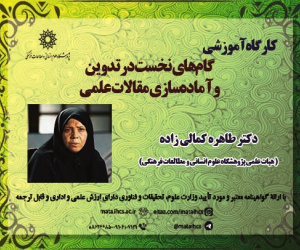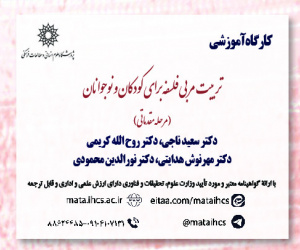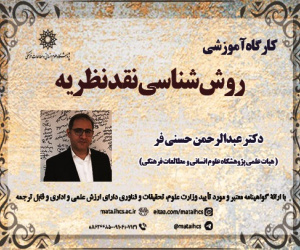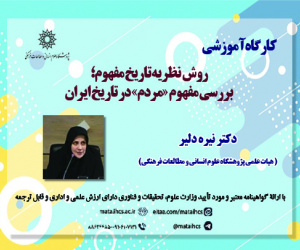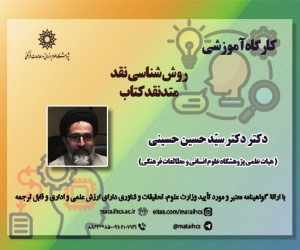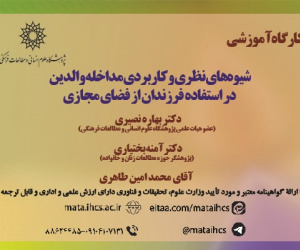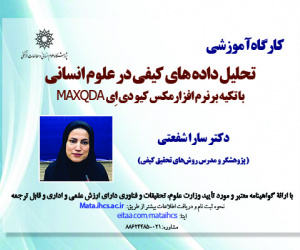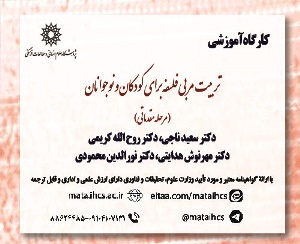مدلسازی ساختاری تفسیری مولفه های حکمرانی خوب
آرشیو
چکیده
حکمرانی جایگاه محوری در گفتمان های اخیر مدیریت عمومی و سیاست عمومی دارد. حکمرانی دارای تاریخچه مفهومی طولانی است که شامل معانی چندوجهی می شود و به عنوان همتای جایگزین برای «مدیریت بخش عمومی» و «رهبری بخش عمومی» عمل می کند. حکمرانی در علوم مدیریت و در گفتمان سیاست عمومی آکادمیک به دلیل چندبنیانی بودن، محبوبیت زیادی پیدا کرده است. اگرچه علاقه و تمایل به مفهوم حکمرانی در طول دو دهه اخیر به شدت افزایش یافته، اما اصطلاح جدیدی نیست و دارای تاریخ و تمدنی طولانی است. ازاین رو هدف مطالعه حاضر، مدل سازی ساختاری تفسیری مؤلفه های حکمرانی خوب براساس برنامه توسعه سازمان ملل متحد در نظر گرفته شده یا به عبارتی طرح واره مؤلفه های حکمرانی خوب چگونه است؟نوع تحقیق، کاربردی است که با استفاده از روش کیفی انجام شده و با بهره گیری از تحلیلی نوین با عنوان «مدل سازی ساختاری تفسیری، روابط بین مجموعه مؤلفه ها» تعیین شده است. بعد از تعیین ماتریس و ترسیم خطوط مرزی، مؤلفه ها براساس میزان نفوذ و وابستگی مشخص و دسته بندی شدند. براساس میزان نفوذ و وابستگی آنها، هیچ مؤلفه ای به عنوان مؤلفه مستقل، وابسته و خودمختار شناخته نشد، تنها مؤلفه «کنترل فساد» به عنوان مؤلفه پیوندی تعیین شد. یافته ها حاکی از این بود که حکمرانی خوب در سایه کنترل فساد تحقق پیدا می کند که علاوه بر اینکه با مبانی نظری سازگار است، با عالم واقع نیز کاملاً مطابقت دارد. این یافته کلیدی در راستای جمله تاریخی و ماندگار مقام معظم رهبری(مد ظله العالی) است که فرمودند: «با دستمال کثیف نمی شود شیشه را پاک کرد». درنهایت می توان با قاطعیت تصریح کرد که با کنترل فساد، حکمرانی خوب و مؤلفه های آن امکان پذیر است.Interpretive Structural Modeling of Good Governance Components
Governance has a long conceptual history, to include multifaceted meanings and to act as counterpart of alternative for “public sector management” and “public sector leadership.” Governance has gained popularity in management sciences and in academic public policy discourse because of its multivalency – its ability to link up with many other arguments and theoretical concepts. Although interest for the concept governance has increased tremendously during the last two decades, the term is not new, but rather as old as the civilization or the human history. The aim of the present study was to interpret the structural modeling of the good governance components based on the United Nations Development Program. The type of research is applied, development, which has been done using the qualitative method, using a new analysis under the title of interpretive structural modeling, the relationships between the set of components were determined. After determining the matrix and drawing the boundary lines, the components were identified and categorized based on the level of Driving Force and Dependent Force. Based on their degree of Driving and Dependent , no components were recognized as independent, dependent and autonomous components, only the "corruption control" component was determined as a linked component. An interesting finding indicates that the good governance is realized in the shadow of corruption control, which, in addition to being compatible with theoretical foundations, is also completely consistent with the real world. This key finding is in line with the historical and lasting sentence of the leader who said: "You cannot clean the glass with a dirty napkin".
